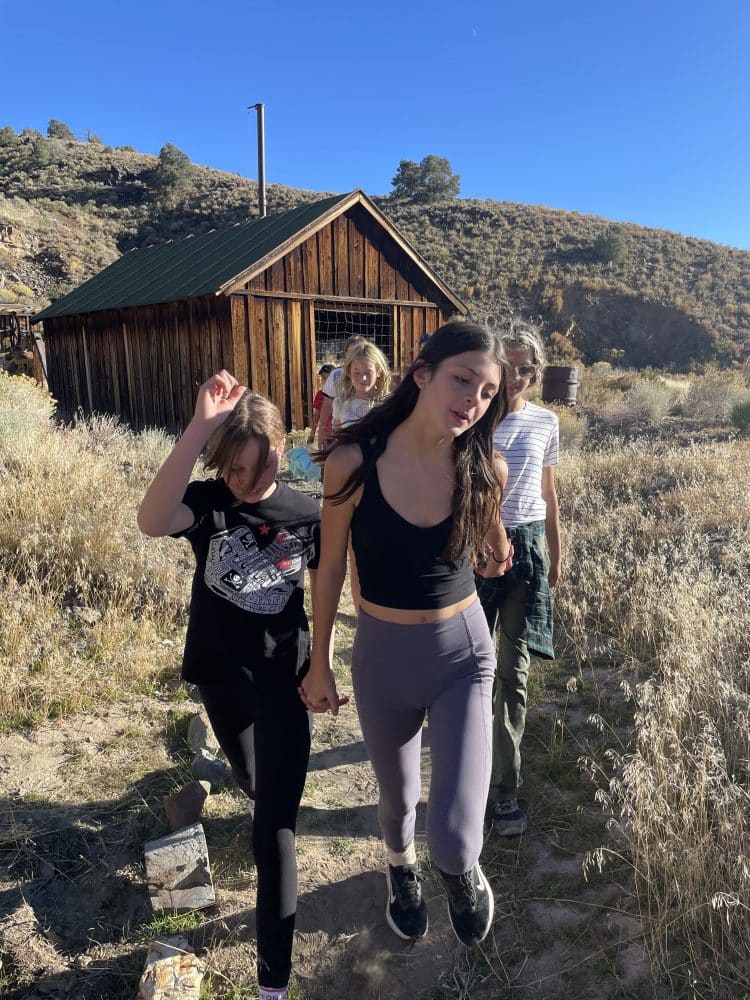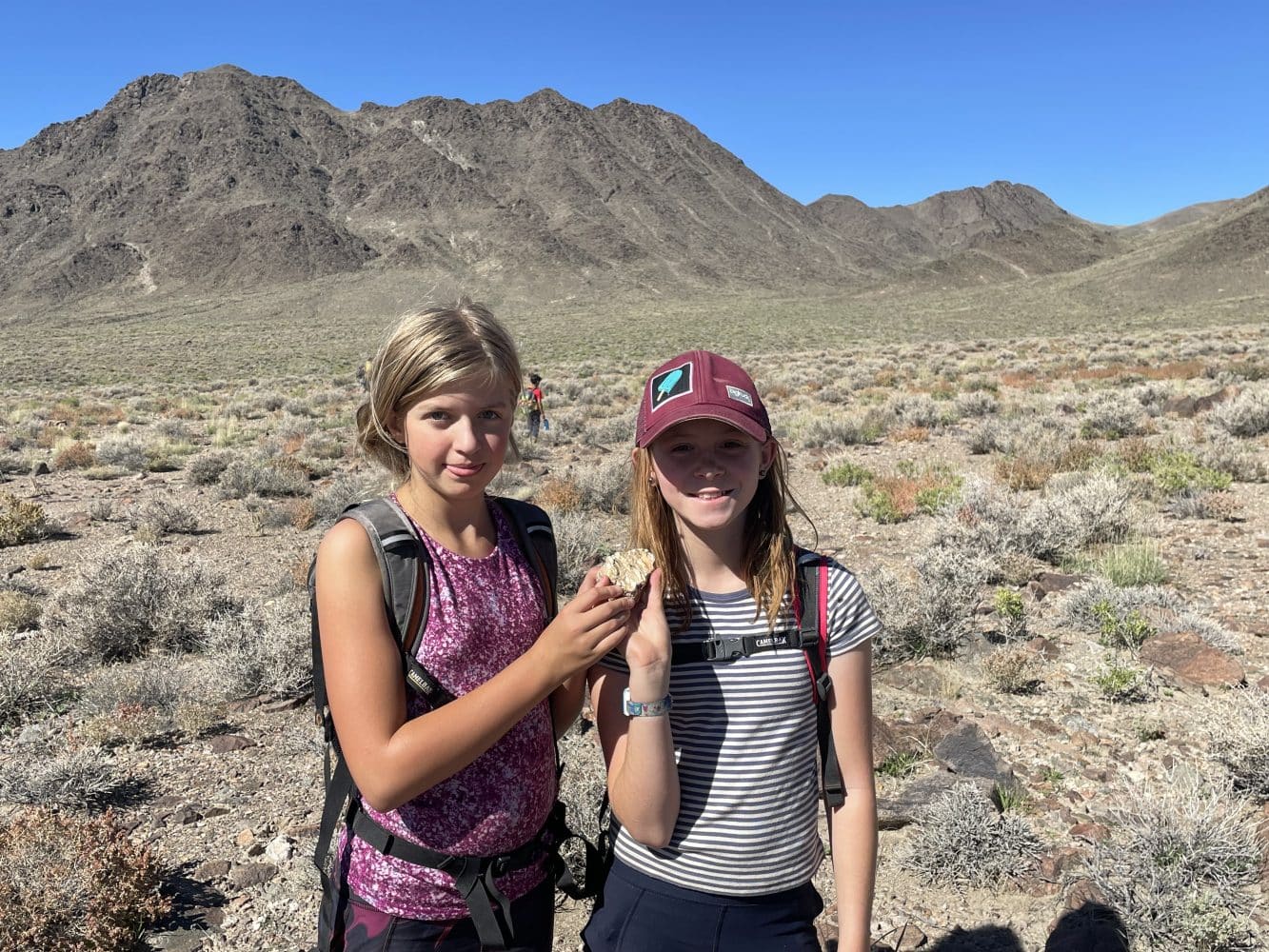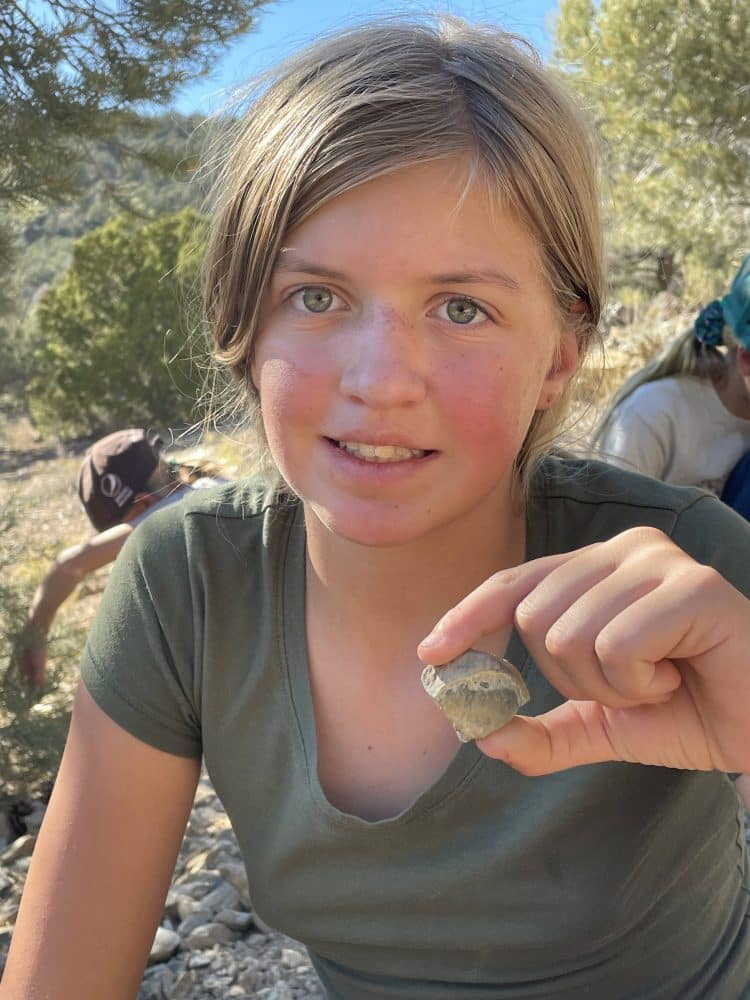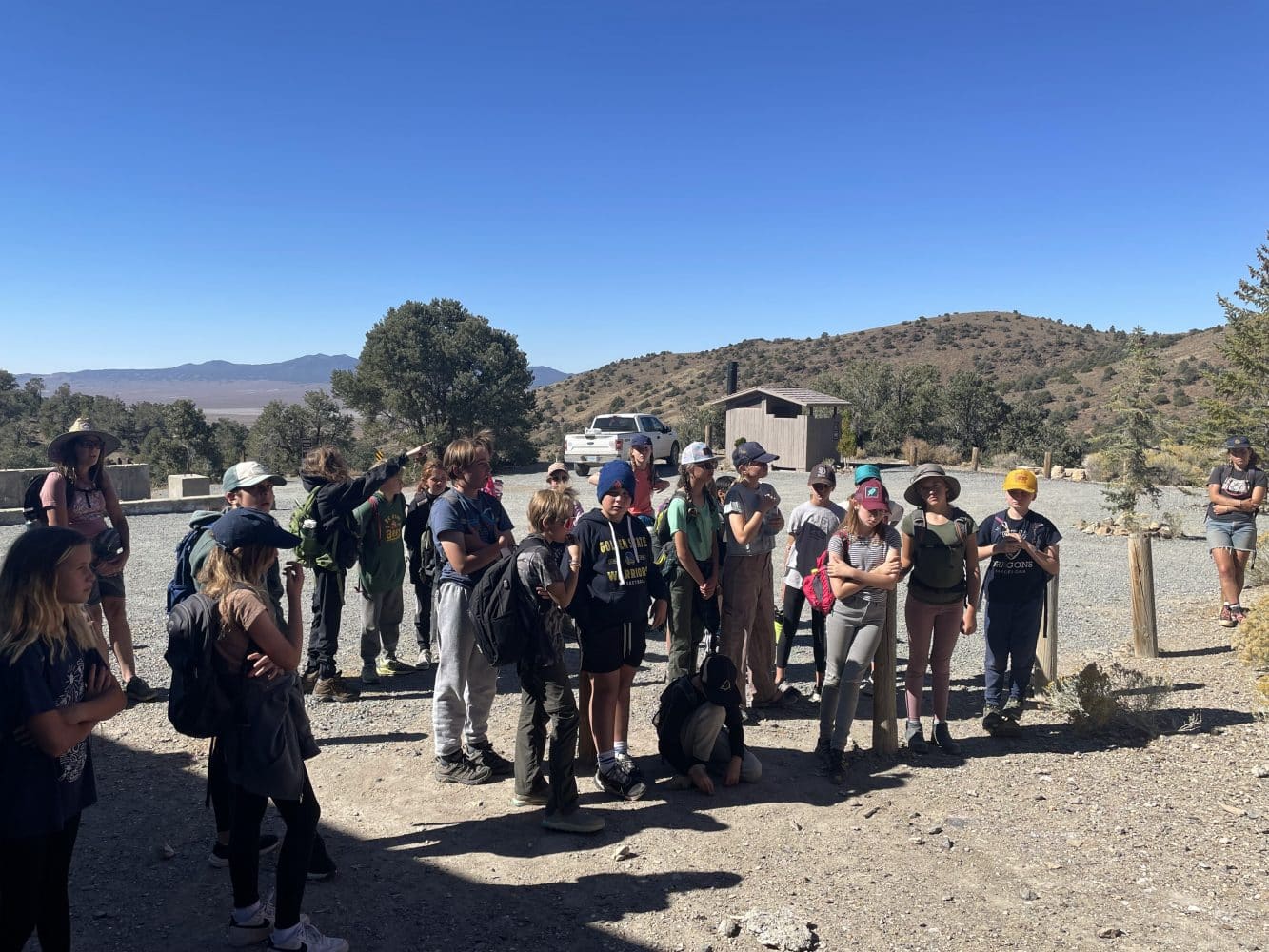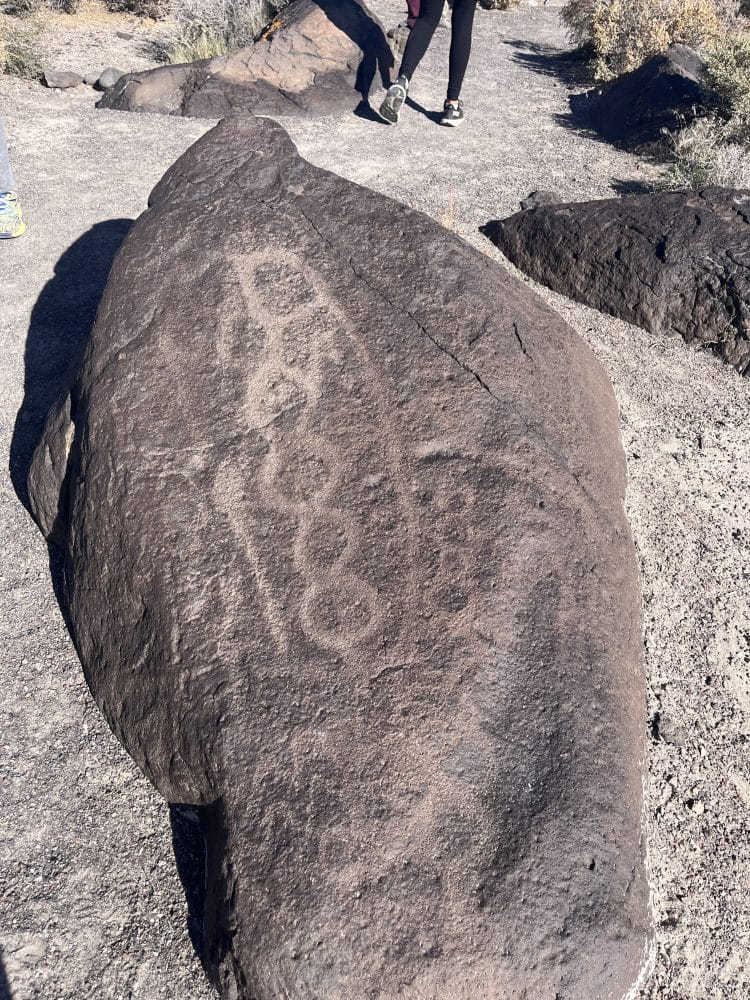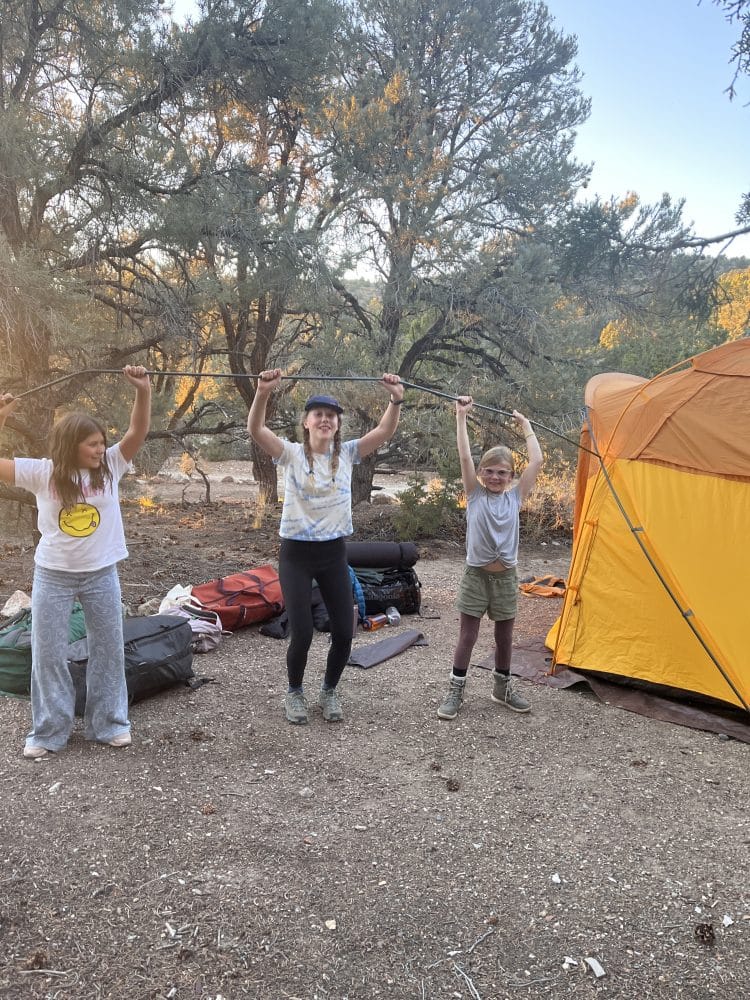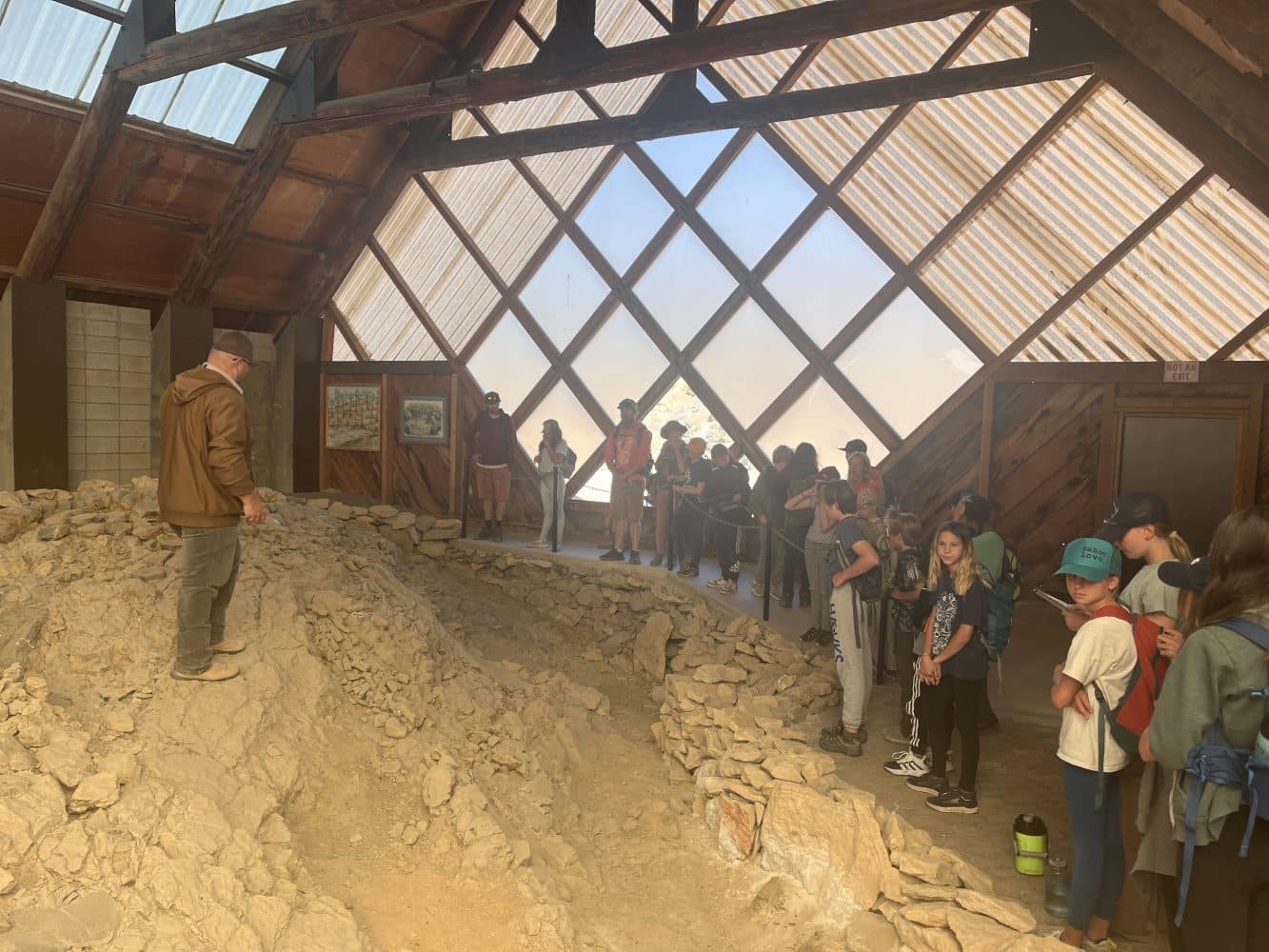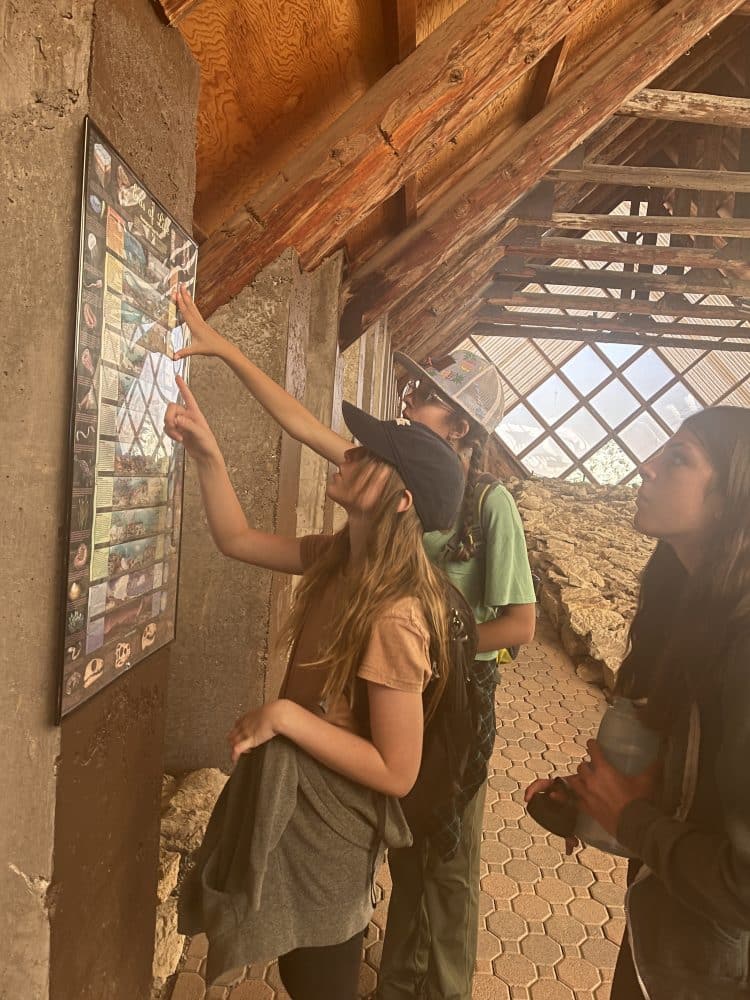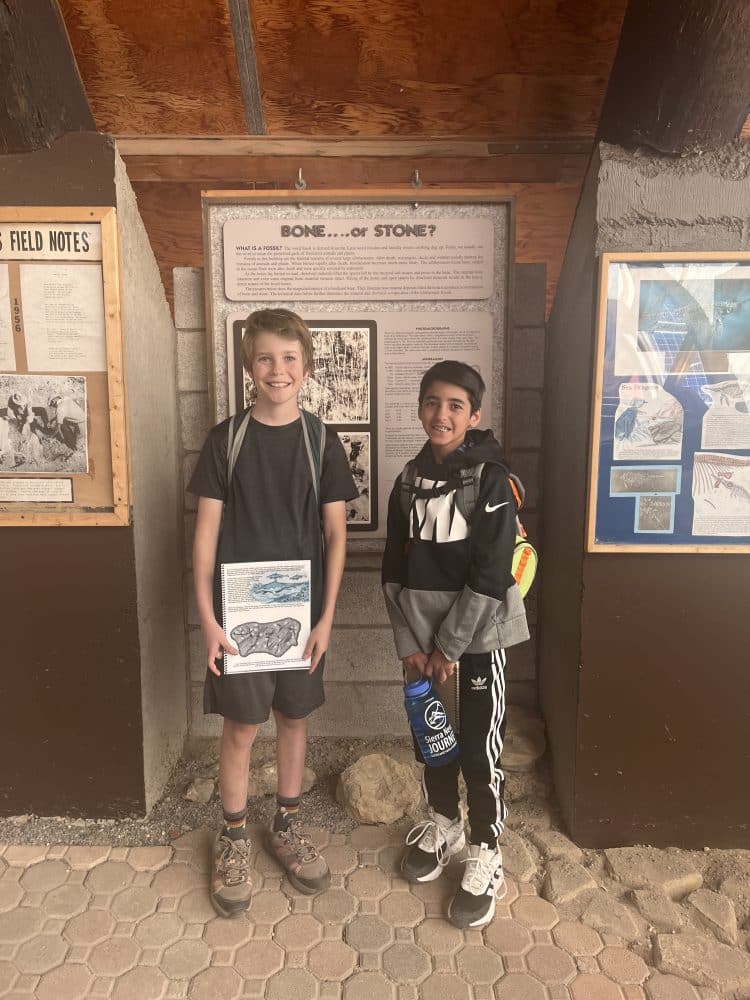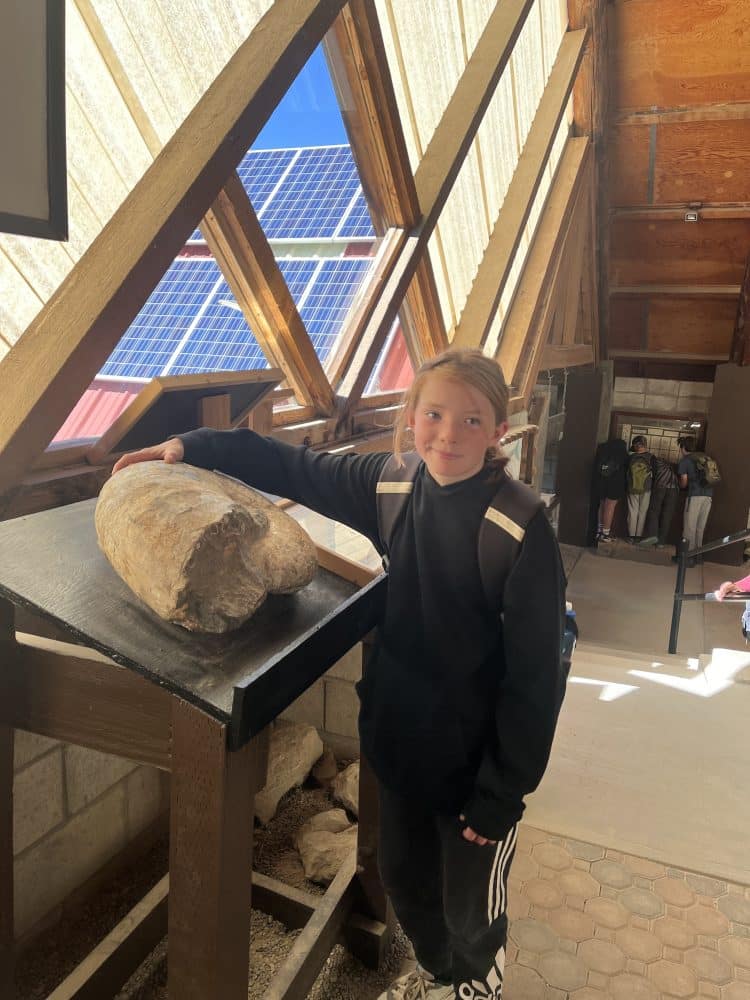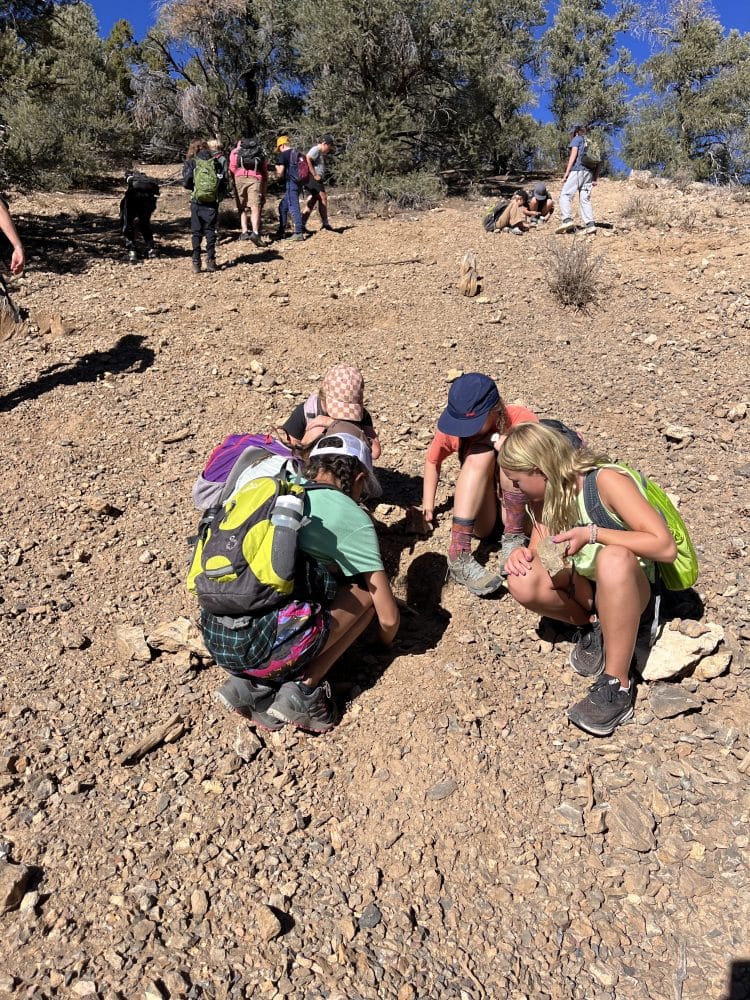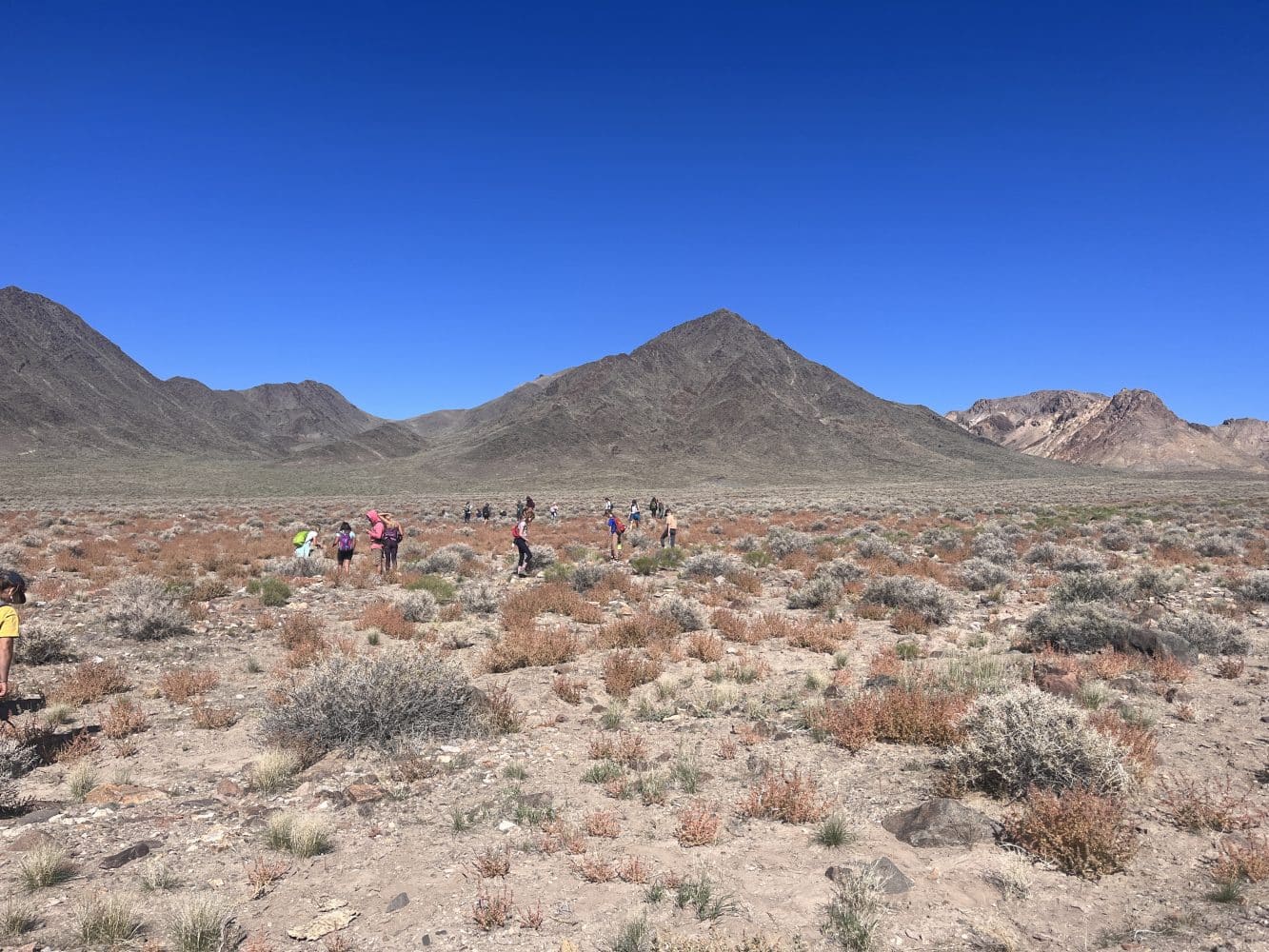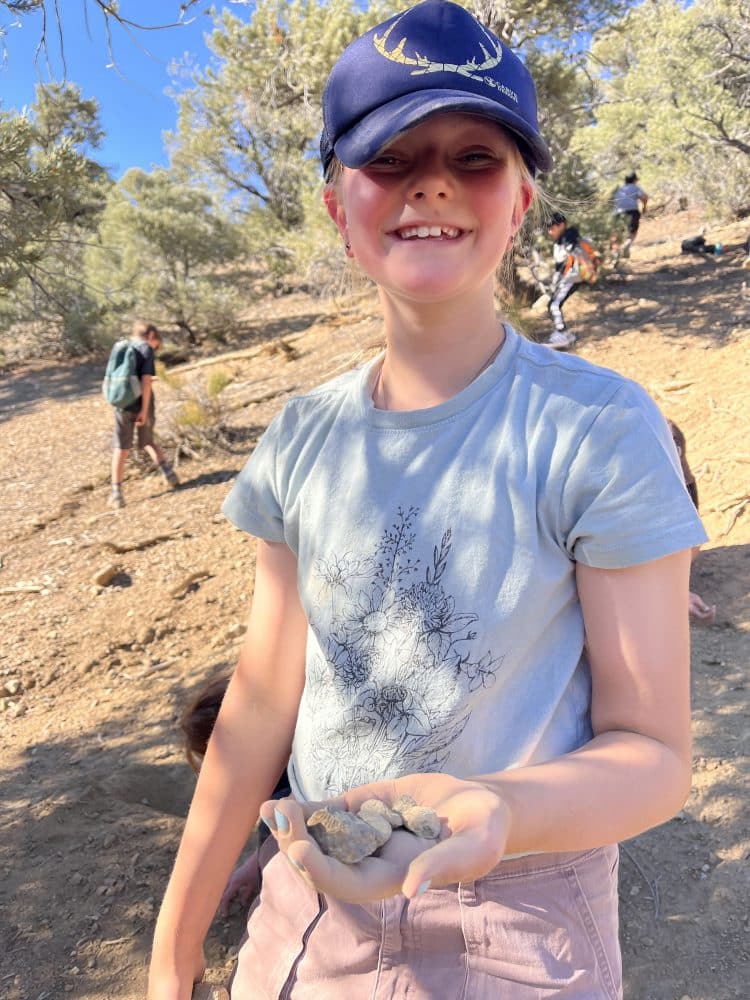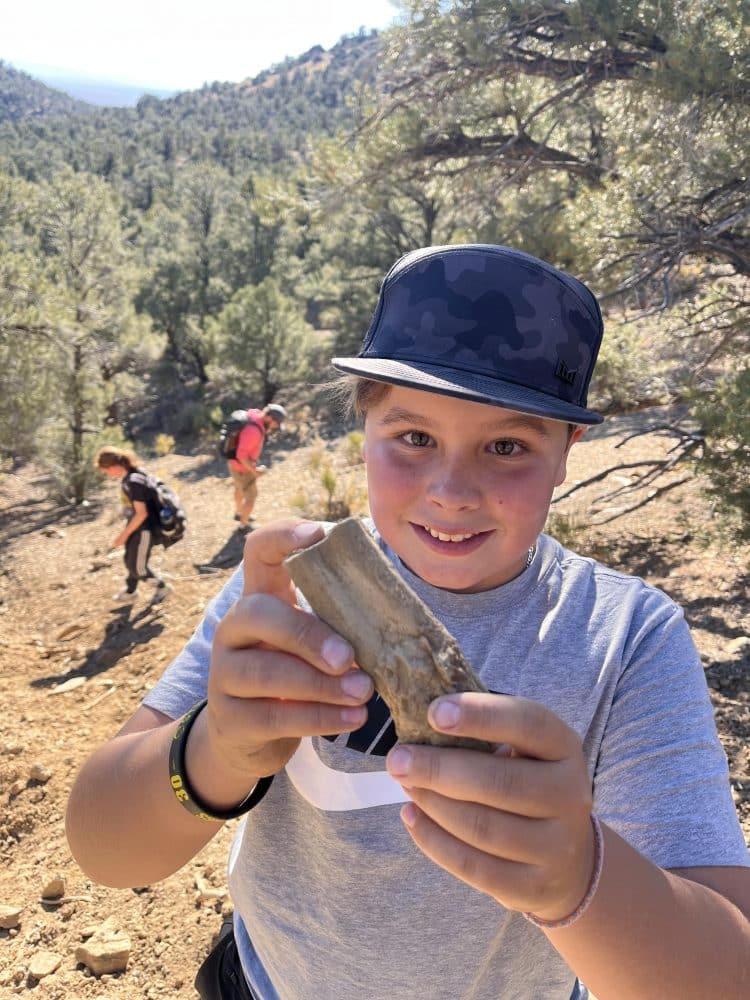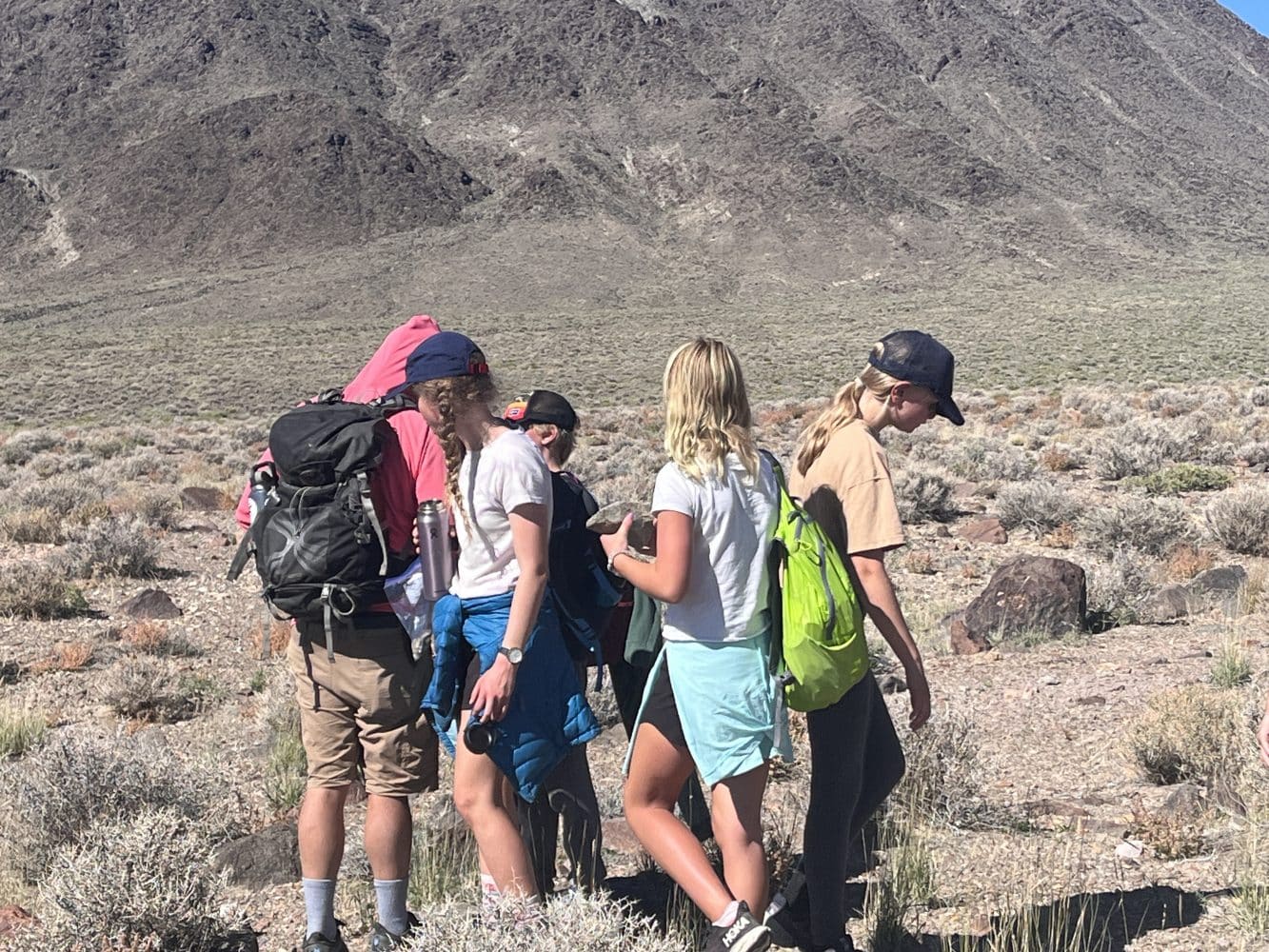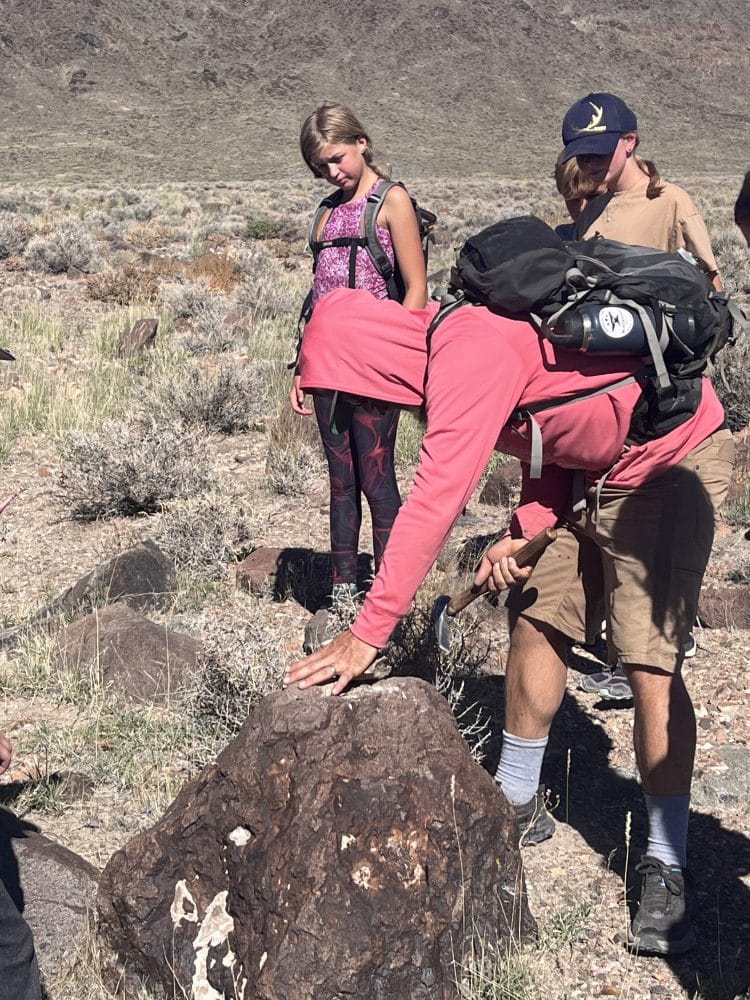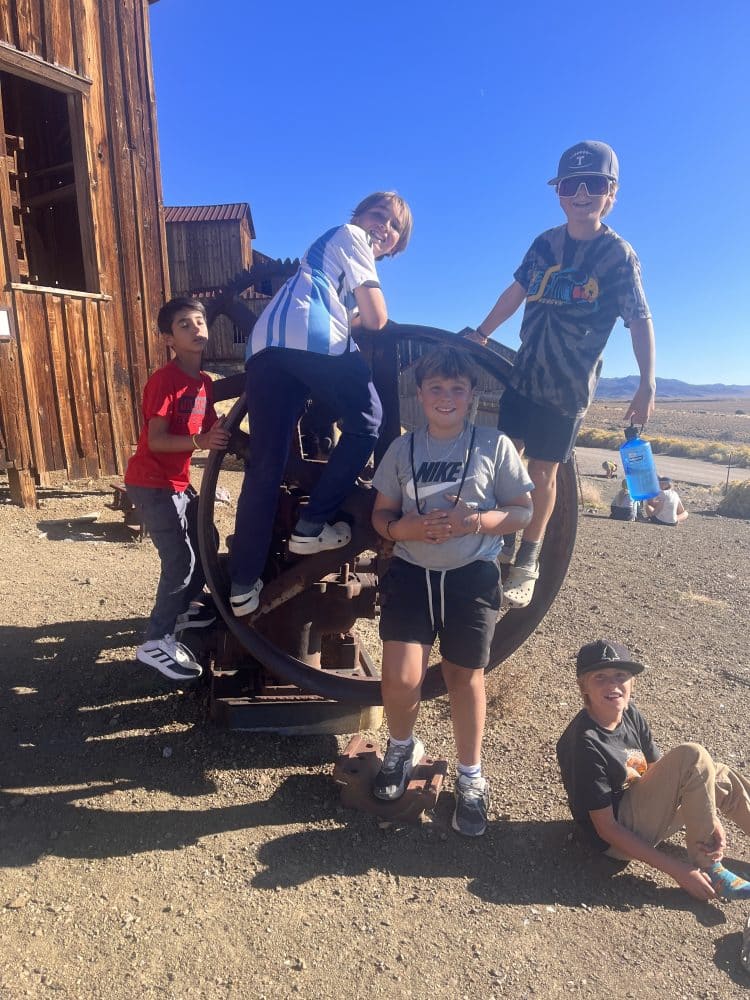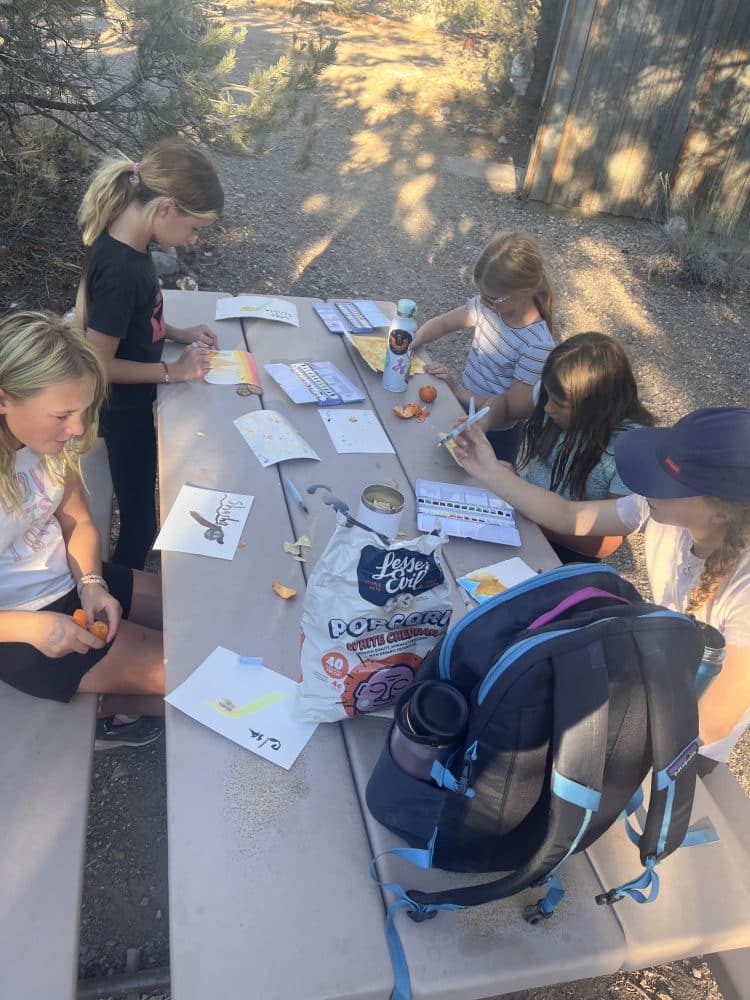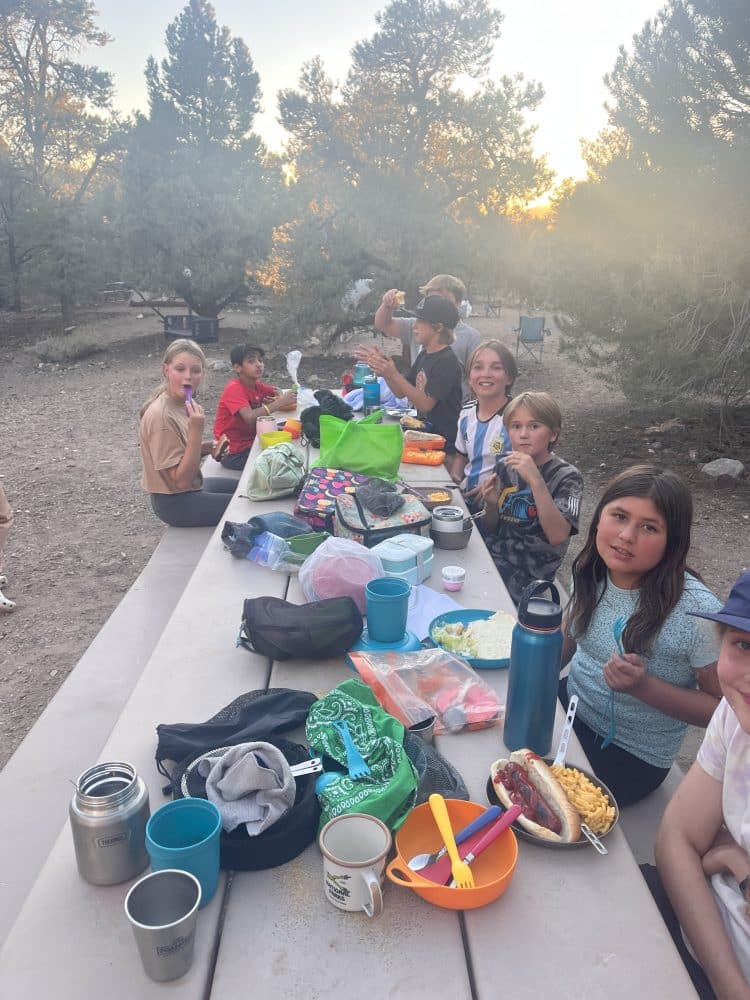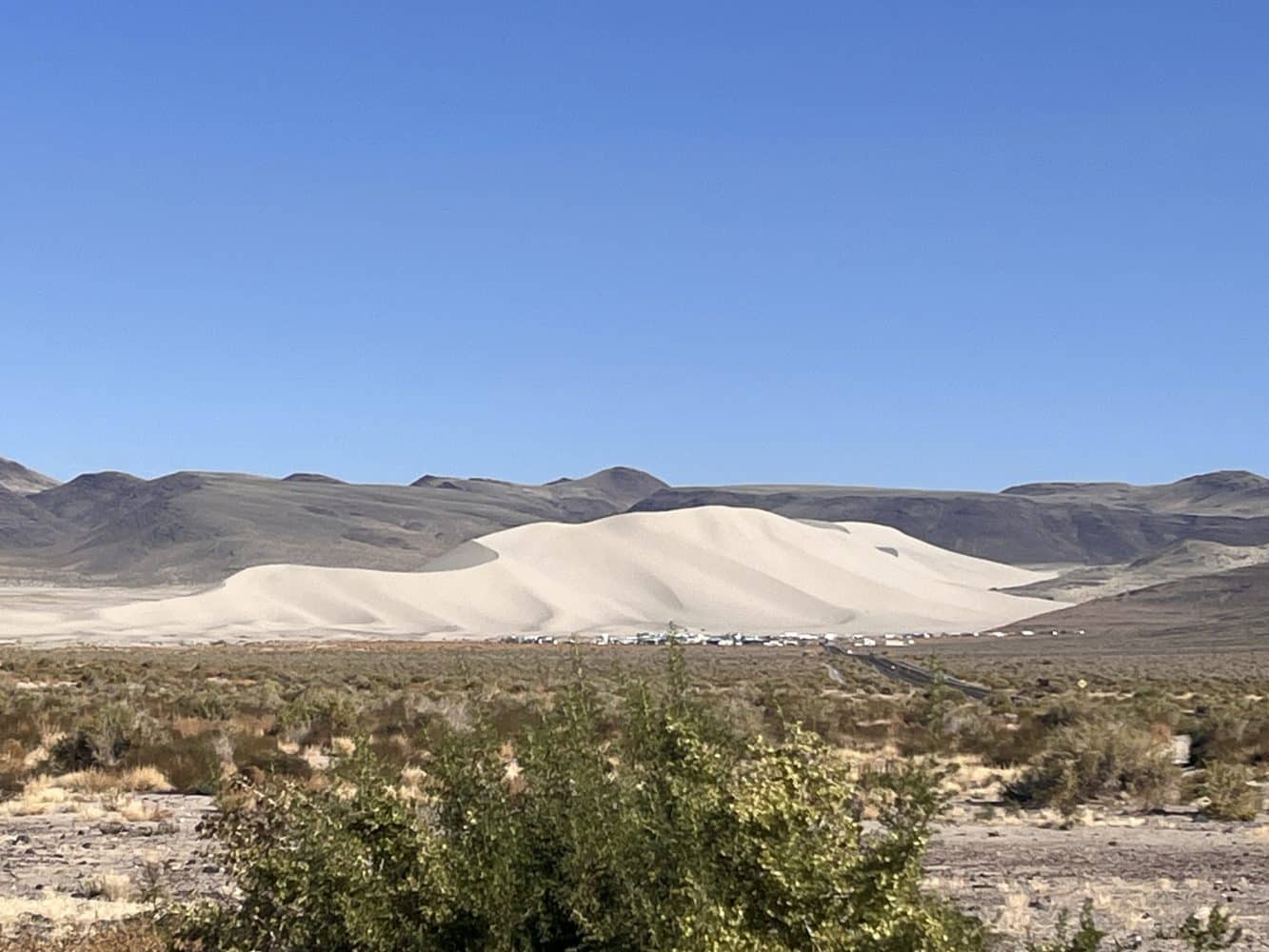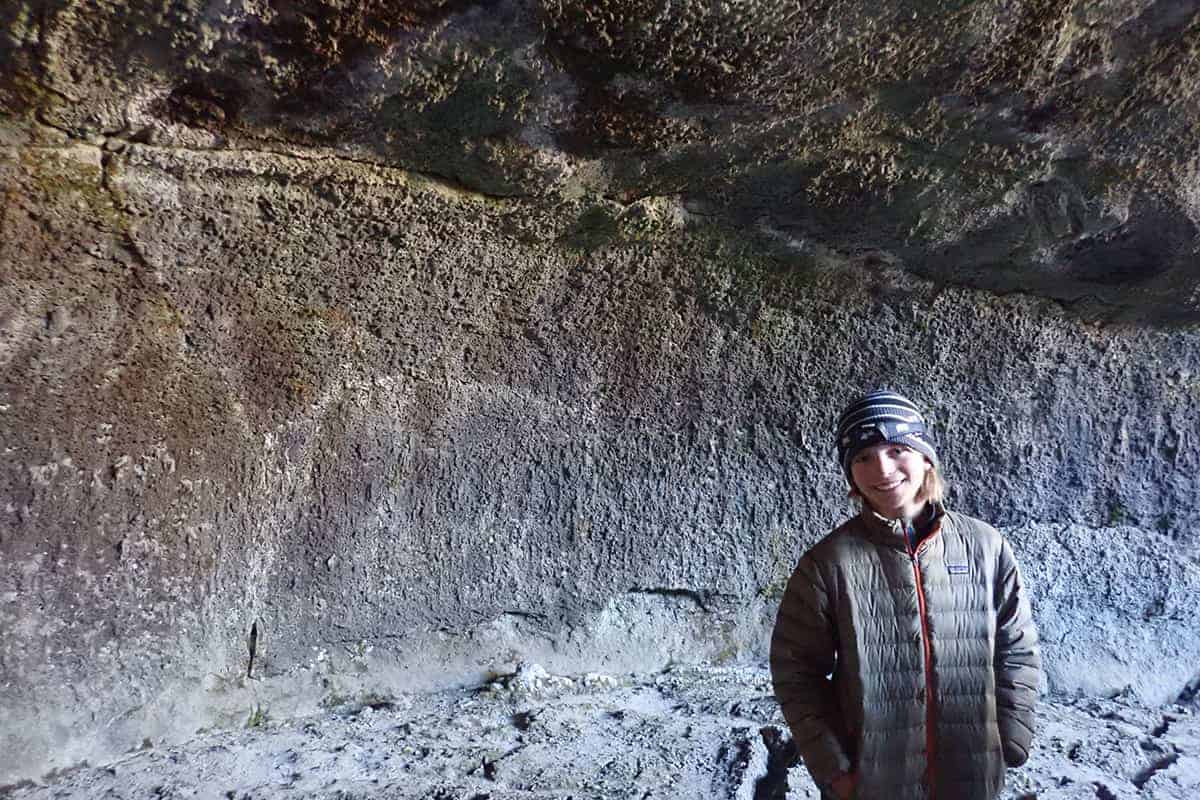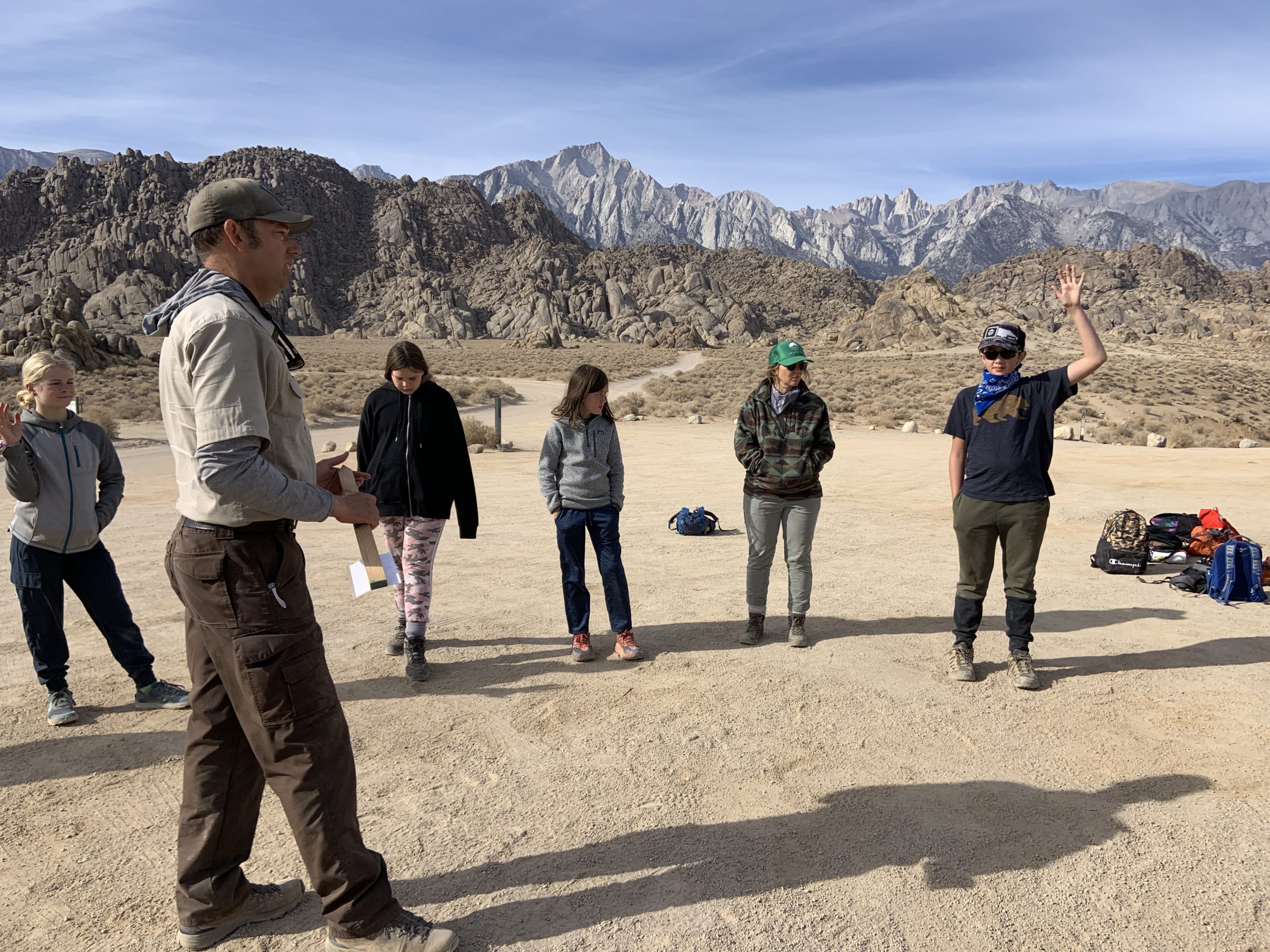From Petroglyphs to Ammonites: A 6th-Grade Study of Ancient Nevada
"It was fascinating for the teachers and students to see evidence of a marine reptile that dates back 100 million years before the dinosaurs."
Words and photos by Steph Gibbons and Loren Trux – TEA 6th-Grade Crew Leaders
Students were great in the field! We achieved our goals of engaging in academic, character and adventure activities. Camp life, dish duty, cooking, and maintenance of our shared space played an important role in our crew bonding and memory making. Student were overall very helpful and kind to each other as we worked the kinks out on our first multi-day crew trip.
We first made our way to the Churchill County museum where students engaged in a museum scavenger hunt and viewed a video about Grimes point petroglyphs and the Hidden Cave. The Museum had exhibits about native life, mining, the military, historic life in western deserts of Nevada, an exhibit on Basque Arborglyphs and more. After departing we headed to Grimes Point where we hiked a trail where we were able to view petroglyphs. We then made our way to camp at Berlin-Ichthyosaur.
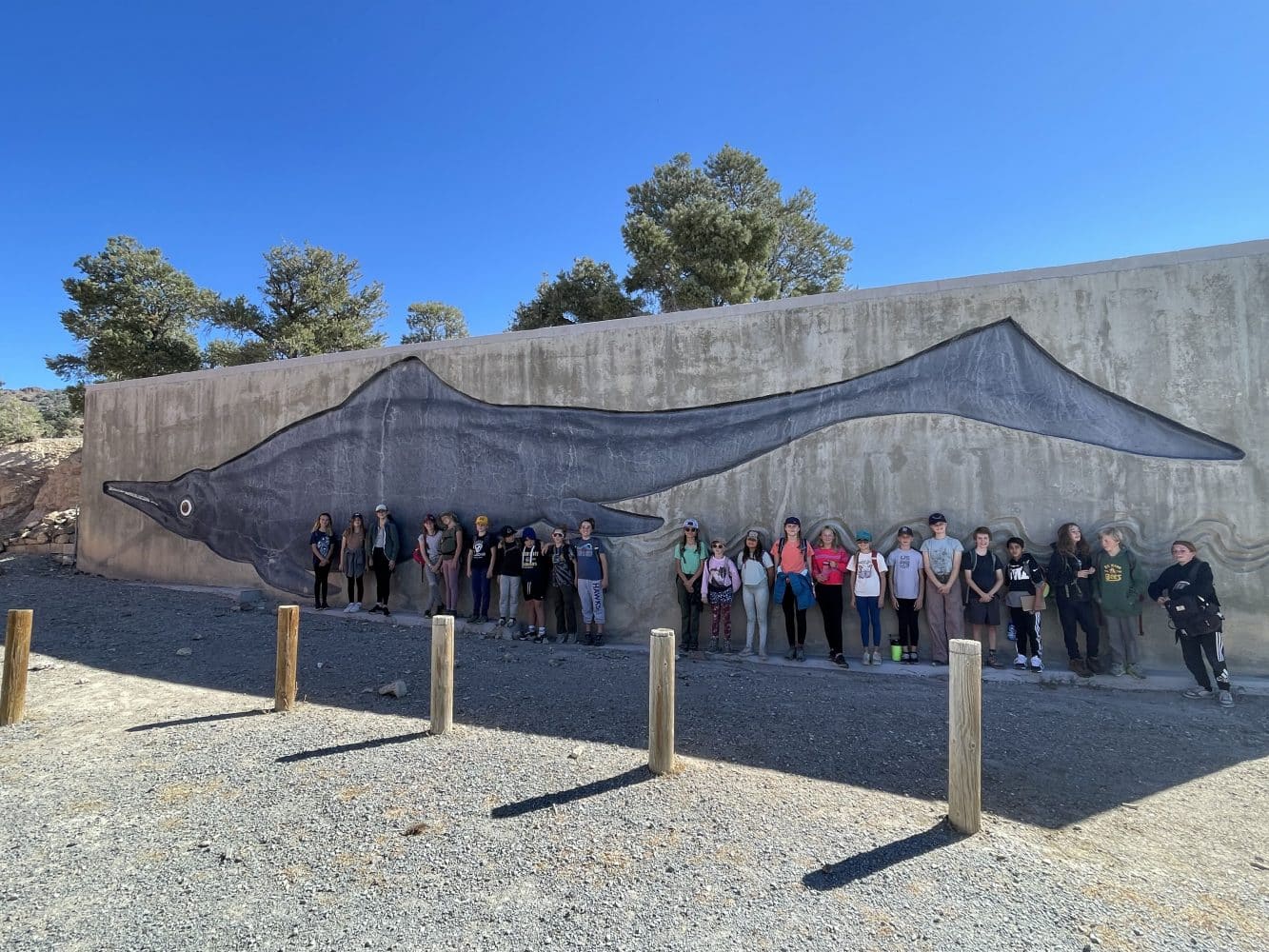
The following day, students devoured a big hot breakfast and we made our way uphill to meet Ranger Jeff outside of the Ichthyosaurus fossil building. This site was erected to protect the fossils of the ichthyosaur identified in 1928 by a professor of Stanford University. Later in 1953, Dr. Charles L. Camp Camp started an excavation of the site which later began to promote and establish the state park today. This amazing State Park is located near the mouth of the West Union Canyon in the Shoshone Mountains of central Nevada. It was fascinating for the teachers and students to see evidence of a marine reptile that dates back 100 million years before the dinosaurs. Students had amazing questions for Ranger Jeff including: how did so many skeletons come to lie at this site so far from the sea and so high above sea level? How were they discovered and excavated : what kind of life did the ichthyosaurus live; and to what animals are they related. Please ask your students what they remember from this visit to the dig site. Following our lunch back at camp we jumped into cars and drove about ¾ of a mile out of the state park to conduct our own fossil dig. Much to our surprise, several students found artifacts in this dig area. Emmy found an Ammonite and James likely found a rib bone, maybe even an Ichthysoaur rib bone! This encouraged us to continue the arduous task of digging and looking for places where more fossils could be found.
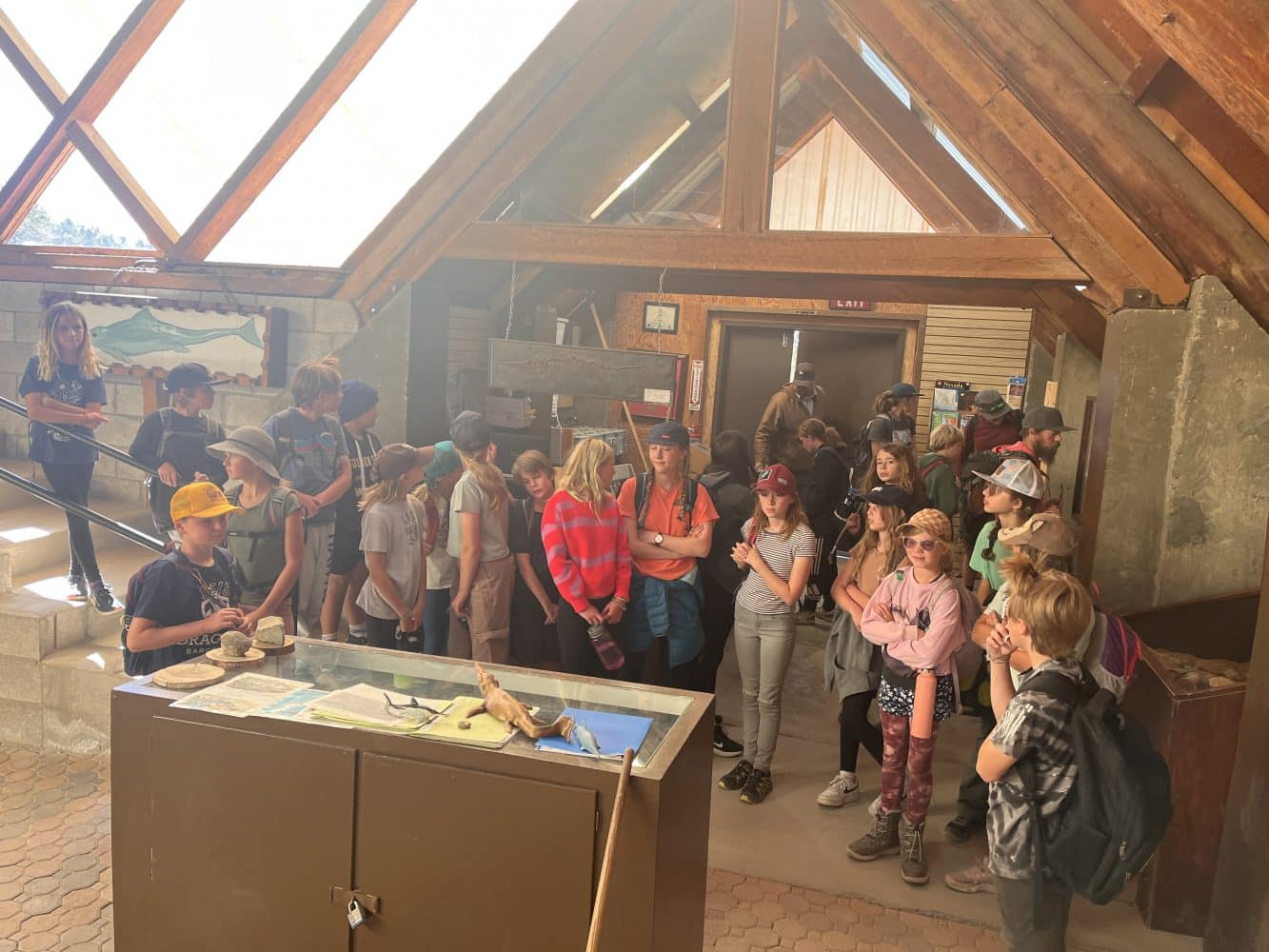
Next we had a slight change in plans based on information gained along the journey. As a connection to the rise and fall of settlements in the west we engaged in a practice that many western settlers engaged in, prospecting. We journeyed from camp and made our way 20 miles west to the desert near Gabbs. From the main road we adventured about 12 more miles west to a remote part of the desert that provided good hunting grounds for good gems and minerals. We searched the desert for opalized wood, petrified wood, agate, opal, chalcedony, jasper and apache tears. We even found the carcass of a dead cow. It was a great experience and a fun adventure into the hot desert. Upon returning from the desert we took time to investigate and learn about life and the going-ons of Berlin, a late 1800’s ghost town. While exploring we learned about the processes used at each location in the mine town and the culture that existed there at that time.
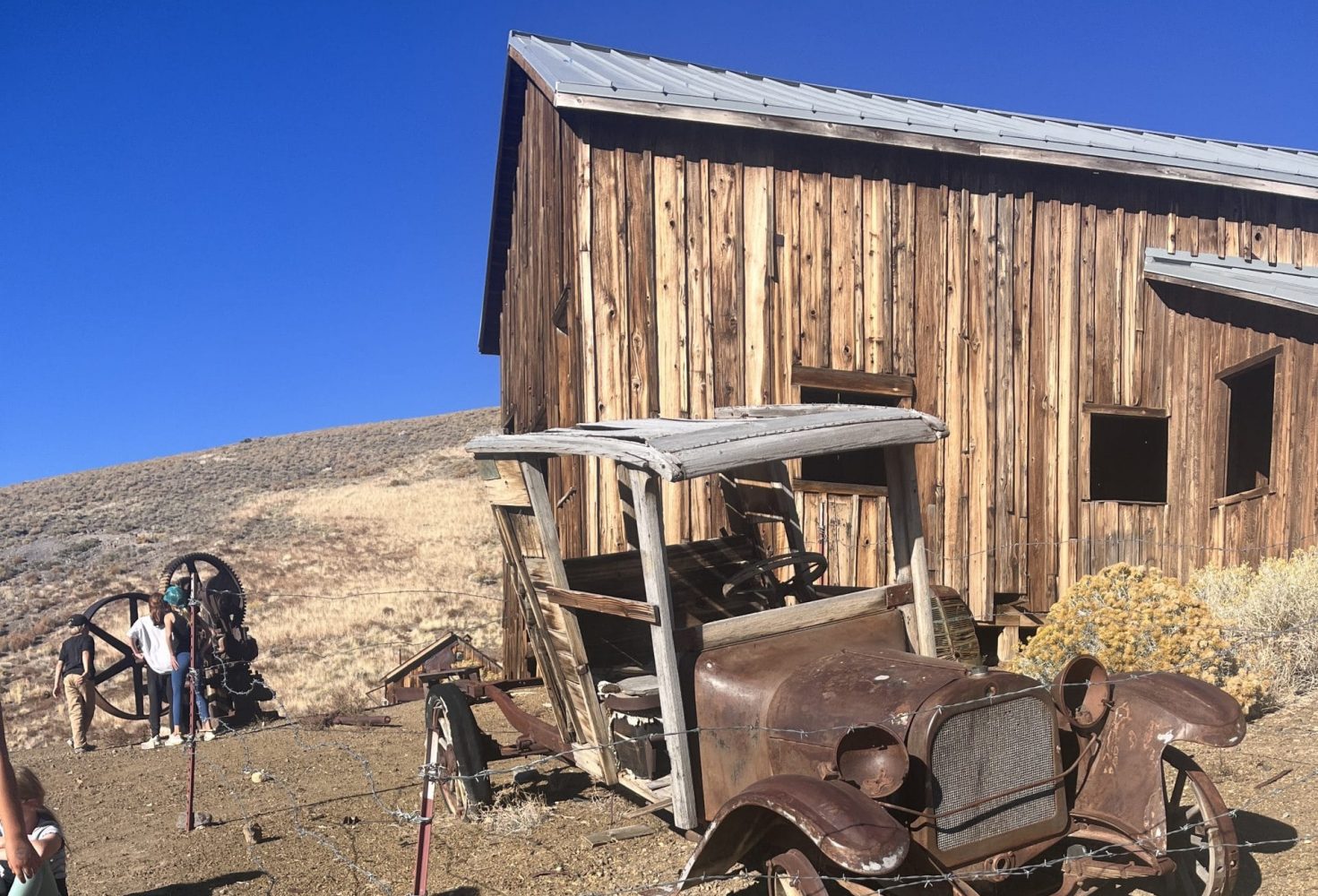
Departure day was a quick pack up and camp clean up before loading the gear and departing for school where everyone helped take care of gear clean up and put away. We had one additional stop on the way home at Sand Mountain to check out the Pony express watering station and the native historic site that is Sand Mountain. According to Piute legend the mountain is a giant Rattlesnake slithering to the North East. What a great trip! – Steph and Loren
Photo Gallery
